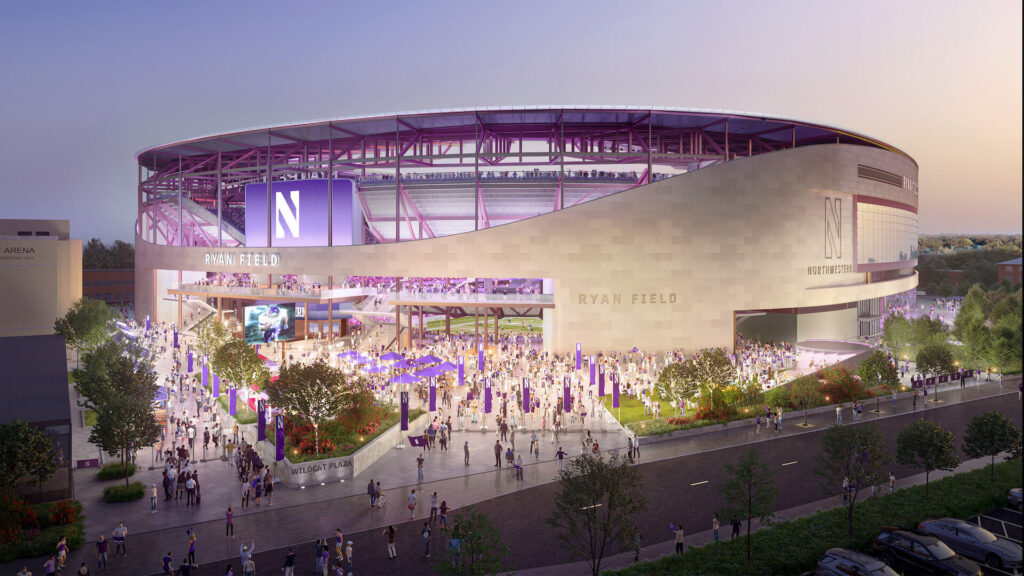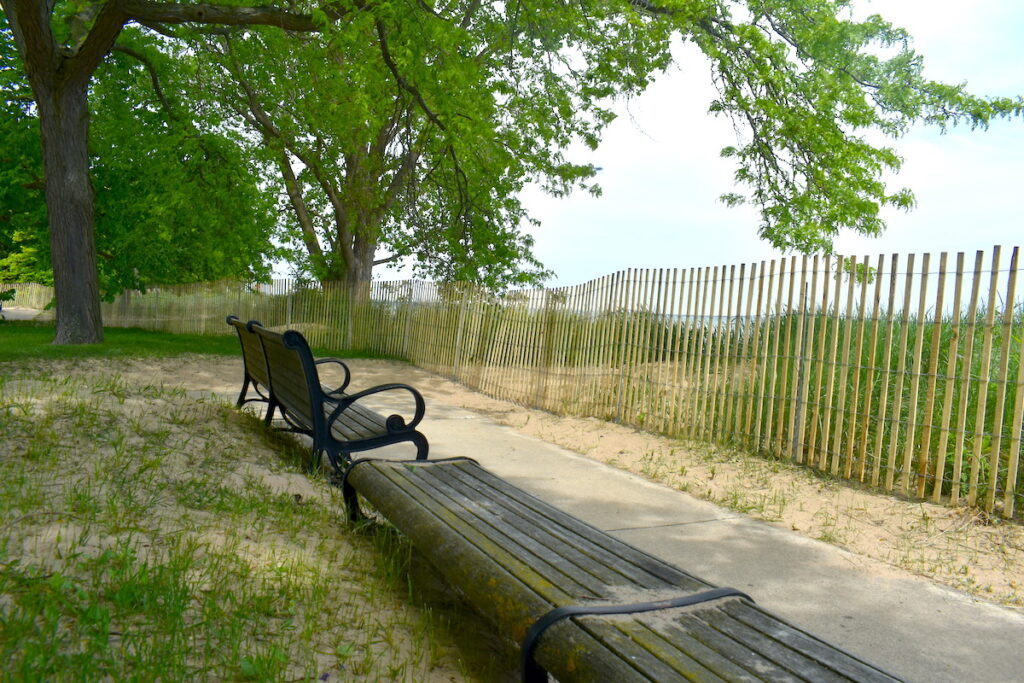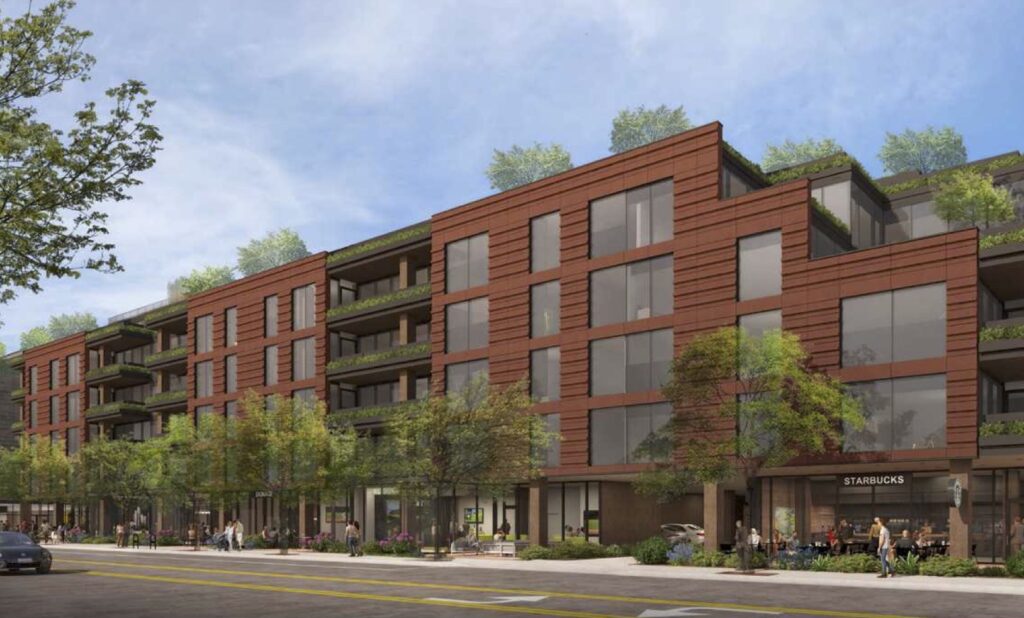
Sound, traffic concerns lead latest discussion around NU’s Ryan Field rebuild
Northwestern University’s proposed plans to modernize Ryan Field continue to draw a mix of criticism and support from a mix of Evanston and Wilmette residents.
Those on both sides of the debate packed the Lorraine H. Morton Civic Center, 2100 Ridge Road, in Evanston on Tuesday evening, June 27, to hear the latest about what the plans.
So many people were in attendance that the room hit capacity and a second room was opened for guests to view the meeting virtually.
The Morton Center was the site of a 7th Ward meeting where experts on concerts, acoustics and traffic, in addition to Evanston and Northwestern officials, spoke in an effort to address concerns raised since the project was announced in September 2022.
The proposed $800 million plans would cut stadium capacity from 47,000 to 35,000, create more communal areas, and, under the current proposal, would enable multiple revenue-generating concerts each year, as well as student-focused events like “winter festivals, holiday celebrations, student movie nights (and) intramural sports championships” according to NU’s website.

But vocal opposition quickly formed and has sustained in response to the plan. Among those opposed to the plan are Wilmette residents who live near the stadium, some of whom have formed a nonprofit called the Most Livable City Association.
Wilmette was one of several discussion items covered during Tuesday’s meeting, particularly when it came to acoustics.
While the audience was not allowed to ask questions at the meeting, 7th Ward Councilperson Eleanor Revelle read from a list of questions that were submitted prior to the evening.
One of the questions, which was asked to audio expert Greg Hughes, with design firm WJHW, referenced a rendering that showed all the sound from the stadium, which would include concerts, going north into Wilmette.
Hughes confirmed that the audio would be directed north, saying, “We’re trying to protect those that are closest, from the most direct side. And we’re taking advantage of distance.”
“The idea of facing it northward is not to send all the sound to Wilmette,” he said. “It’s to take advantage of the distance and the buildings and other infrastructure in the stadium that helps prevent that.”
In a follow-up question asked by Revelle, Hughes said that the stage would face north toward Wilmette as well.
Hughes clarified that, while the proposal includes a canopy, that does not mean sound would be contained within the stadium.
“We have openings in the stadium. The sound is going to make it through,” he said. “The intent is to limit the amount of energy that makes it through.”
In response to who would be responsible performers who violate or ignore the city’s noise ordinances, Dave Davis, NU’s executive director of neighborhood and community relations, said those fines would be imposed by the Evanston City Council.
The idea of facing (the stadium) northward is not to send all the sound to Wilmette. It’s to take advantage of the distance and the buildings and other infrastructure in the stadium that helps prevent that.”
Greg Hughes, sound expert with design firm WJHW
But he said the plans are to create a working group to determine proper sound levels, and he said even if the plans move forward as proposed, the first concert would not happen until 2027 at the earliest.
“So, we’ll have time to work these through,” Davis said. “But if the City Council decides that they want to impose a significant fine to serve as a deterrent for artists, that is something that you can certainly consider. I’m not sure the university would push back against that in any significant way.”
Peter Lemmon, with Kimley-Horn was on hand to discuss traffic and transportation. He said officials expect that 50 percent of concert attendees will drive to the venue, but he specifically highlighted two train lines — the CTA’s Purple Line and Metra’s UP North Line — that have stops close to Ryan Field.
The purple line has a terminal in southeast Wilmette and the Metra has a stop at Central Avenue in Evanston, not far from the stadium.
“So, that’s a significant opportunity for people not to drive,” Lemmon said. “Particularly north-south, people coming from the city for the show, and the northern suburbs.”
He added that neighborhood parking will not be allowed during concerts.
“There will be parking for residents and your guests, but in terms of event parking, no parking in the neighborhoods,” he said. “Similar to something you might see at Ravinia (Festival in Highland Park).”
Northwestern will also offer shuttle bus services during the concerts, he said.
Revelle said that a traffic study estimated about 30 percent of concert attendees, approximately 8,500 people, would take the CTA; however, he said a resident questioned that data, saying based on the CTA’s capacity data, it would take “six hours of fully loaded CTA trains” to fill that number.
Lemmon said he and his team would examine the numbers again but said they determined that 30 percent estimate by examining pre-COVID-19 pandemic CTA data from Chicago Cubs games.
“It’s in the range of 25 to 35 percent,” he said. “It’s also a bigger venue, so they’re having maybe 10,000 to 12,000 people take the L.”
Lemmon added that the CTA at Ryan Field would primarily only run southbound trains, while the Wrigley Field trains go both north and south.
He also said extra train service could be provided during concerts.
“It’s not the typical every 15 minutes there’s an L train, and every half hour or hour there’s a Metra train,” he said. “There’s trains ready to go on backup.”
He also said officials estimate 10 percent of concertgoers would take the UP North line, a number he said “could potentially be undercount(ed).” That number came from speaking with officials at Ravinia, which is adjacent to a Metra stop.
Following the presentation, Revelle said the 7th Ward will hold more meetings, though the dates of those have yet to be determined. Residents were also encouraged to share their comments and concerns with the Evanston’s Land Use Commission, which will ultimately decide whether to give the proposal a positive or negative recommendation to the City Council.
The Record is a nonprofit, nonpartisan community newsroom that relies on reader support to fuel its independent local journalism.
Subscribe to The Record to fund responsible news coverage for your community.
Already a subscriber? You can make a tax-deductible donation at any time.

Peter Kaspari
Peter Kaspari is a blogger and a freelance reporter. A 10-year veteran of journalism, he has written for newspapers in both Iowa and Illinois, including spending multiple years covering crime and courts. Most recently, he served as the editor for The Lake Forest Leader. Peter is also a longtime resident of Wilmette and New Trier High School alumnus.


